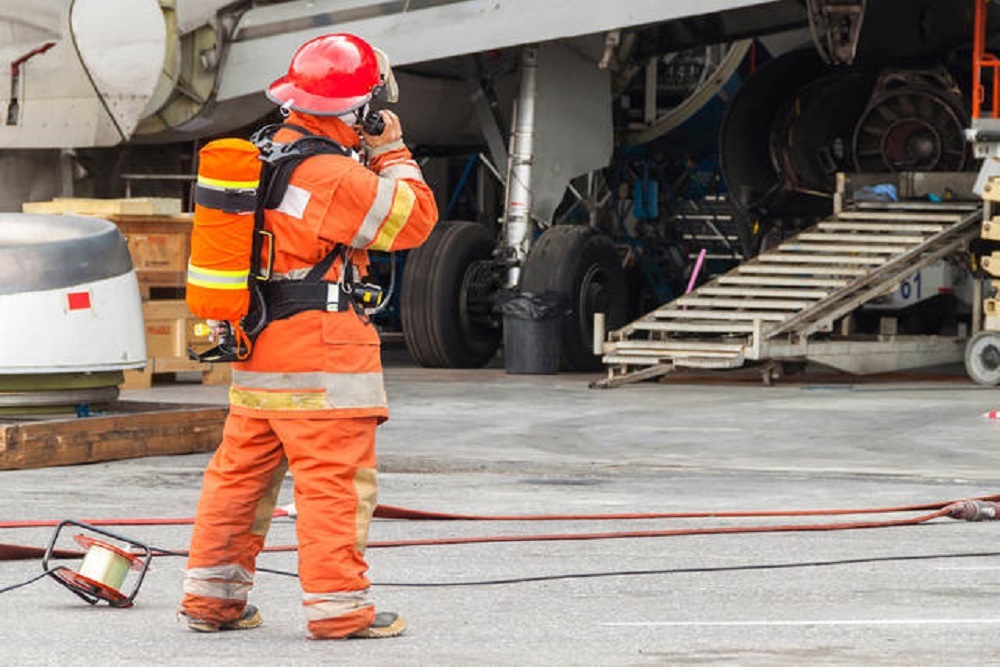Underwriters Laboratories issued the following announcement.
In fire incident investigation reports, communication problems are often cited as a contributing factor in first responder line of duty deaths or serious injuries. Emergency first responders utilize portable radios – known as land mobile radios or LMRs – as a critical communication tool to ensure effective fireground command and control, to establish personnel accountability and to improve firefighter safety when operating within buildings during a fire or other emergency.
As an essential safety tool for operating in the hazardous conditions caused by fire, fire departments equip their interior firefighters with LMRs. These tools are critical for communicating with the incident commander, dispatch center and other firefighters while carrying out firefighting and rescue duties. Portable LMRs can also be a firefighter’s lifeline when a mayday call must be transmitted. However, LMR users need confidence that a message is both sent and received, so that rescue of a trapped or injured firefighter can begin immediately. That confidence is delivered by an emergency responder radio communication coverage system or ERRCS.
A fire in a single family dwelling involving one or two rooms might be considered routine for most fire departments. Now, consider a fire in a multiple story or commercial building made of steel, concrete, glass and other dense materials. These construction features can inhibit or block normal LMR transmission or receiving functions, and disrupt essential first responder communications. The solution for first responder safety is a listed ERRCS.
An in-building ERRCS that complies with current model fire codes for design, installation, testing, maintenance, safety and product performance standards is a critical safety system, given the importance of portable LMRs to firefighter safety. It is essential for these LMRs –which operate on the public safety frequency utilized by a municipality — to operate reliably anywhere within a building at all times.
Available technologies
Distributed antenna system
A distributed antenna system (DAS) is a series of managed hubs and remote antennas that distributes an RF signal to a portable radio within a building. These systems may use passive and/or active components. At the head-end of the DAS, a base station or repeater provides the signal. A main hub digitizes the signal and distributes it to other hubs and radios via a coax cable or high-bandwidth fiber optic network. At each remote hub, a device converts the signals from digital to RF and from RF to digital and distributes the RF signal over a distributed antenna covering a portion of a building. By digitizing the signal on the fiber optic network, a DAS can transport the mobile signal at full strength to any connected remote antenna, no matter how far it is from the main hub and base station.
DAS is used in new or existing buildings with a need to enhance the emergency two-way LMR capability. By focusing a base station’s signal on a specific area through remote antennas, the DAS delivers higher capacity and consistent coverage over the area it serves.
Radiating cable system (aka “leaky cable”)
An available – but infrequently used – technology is a radiating cable system, often called a “leaky cable.” A radiating cable is a long, flexible antenna with slots that broadcast radio frequency (RF) signals, hence its descriptive name of leaky cable. A radiating cable is a passive system that does not amplify the RF signal, and this system normally experiences a loss of signal strength over distance. The reliability of these systems is also affected by other proximal RF signal interference.
Radiating cable systems can be installed in new construction or as an ERRCS solution for existing buildings to enhance emergency two-way radio capability. Since this cable comes in multiple lengths and is flexible, this antenna system can be installed in mechanical shafts, stairways or corridors within a building to provide RF coverage throughout a facility
Model Code requirements relating to ERRCS
From a model code perspective, ERRCS was first introduced in the 2009 International Fire Code (IFC) Section 510 that required all buildings to provide approved radio coverage for emergency responders throughout the interior of a building at the same coverage levels that exist outside a building. In 2012, ERRCS was included in NFPA 1 Fire Code Section 11.10. Section 11.10 also called for coverage throughout the interior of a building at the same as the level available outside a building. Both model fire codes reference NFPA 72, National Fire Alarm and Signaling Code, and NFPA 1221, Standard for the Installation, Maintenance, and Use of Emergency Services Communications Systems. Technical requirements in these standards cover design, installation, commissioning, inspection, testing, maintenance and reliability for ERRCS. Electrical components for these systems may also need to comply with requirements of NFPA 70, National Electrical Code (NEC).
UL has published UL 2524, the Standard for Safety of In-building 2-Way Emergency Radio Communication Enhancement Systems. This Standard contains specific performance requirements in accordance with the 2018 IFC and NFPA 1221-2019. It also addresses fire and shock risks.
System certification in accordance with UL 2524
UL was asked to develop an ERRCS system certification Standard by industry to address interoperability and compatibility concerns related to the integration of many system components, possibly from different manufacturers. UL 2524 incorporates several other component safety certification Standards, such as UL 60950, the Standard for Safety of Information Technology Equipment - Safety - Part 1: General Requirements, which is used to certify many products for electrical shock. However, UL 60950 does not include performance criteria for ERRCS or any other products that are covered by other, specific product certification standards. For ERRCS, there are numerous critical safety and performance requirements found in the IFC, NFPA 1 and NFPA 1221 that are not addressed by system certification solely to UL 60950. The 2021 IFC will include a requirement for ERRCS certification to UL 2524 and the same requirement is proposed for the 2021 NFPA 1, which has completed the first draft ballot by the technical committee.
The requirements unique to UL 2524 include both specific requirements for system construction and for verification of performance and functionality as required by NFPA 1221 and the model fire codes.
Primary ERRCS features
As an overview, typical ERRCS operation is continuous and automatic, with some exceptions such as New Your City where the ERRCS is activated by first responders when needed. ERRCS requires specified signal strength into and out of the building with delivered audio quality (DAQ) of 3.0. DAQ is simply a qualitative measurement of voice intelligibility and clarity. ERRCS must be designed to operate specifically for use as an ERRCS system.
The IFC requires performance of 95 percent in general building areas and 99 percent in designated critical areas. NFPA 1 and 1221 require 90 percent coverage in general building areas and 99 percent in critical areas. Critical areas are defined as fire command centers, elevator lobbies, exits and fire equipment rooms. Efforts are currently underway to harmonize the difference between these two model fire codes prior to the publication of the 2021 editions.
An ERRCS must meet specific survivability requirements to ensure it will continue to operate in a fire. The system must have both a primary power source and a stand-by or back up power to operate at 100% capacity for at least 12 hours with required dedicated annunciation on site. Building fire alarm systems are required to annunciate any supervisory signals form the ERRCS.
The system performance and reliability must always be tested upon installation and maintained operational. An annual inspection is also required.
Determining code compliance
In their jurisdictions, code authorities may see different systems and technologies proposed as meeting model code requirements for ERRCS. Code authorities and first responders need to be aware of which buildings are equipped with ERRCS and ensure that these systems are certified, installed properly and maintained so that they will perform when needed in an emergency.
There are now UL Certified products to UL 2524, the Standard for Two-way Emergency Radio Communication Enhancement Systems first and second edition. It’s easy to specify or verify ERRCS UL Certifications using the Product iQTM search tool by searching product category UTMH. Product iQ is free, with a one-time registration.
For more information, please contact ULRegulatoryServices@ul.com.
Original source can be found here.






 Alerts Sign-up
Alerts Sign-up